The week at a glance
- Possible Short-tailed Shearwater in Cornwall
- Red-necked Stint in Dorset
- Eastern Olivaceous Warbler in East Yorkshire
- Possible Collared Flycatcher in East Yorkshire
- House Finch in Devon
- Exceptional influx of Lapland Buntings
Following the incredible report of a possible Short-tailed Shearwater in Co. Clare on 18th, there were two further reports of 'probables' this week, both in Cornwall. One was reported past Pendeen on 26th and then what may well have been the same bird went past Gwennap Head, Porthgwarra the next day. That these two birds are the same as that in Ireland is an intriguing possibility. Also at sea, another probable Yelkouan Shearwater was recorded, again past Porthgwarra (Cornwall) on 29th.
The one that almost got away this week was a very smart summer-plumaged Red-necked Stint in Dorset, the county's first. It was seen and photographed (as a Little Stint) on The Fleet at Ferrybridge on the morning of 27th, but only identified from the photographs later in the day. Despite much effort, it couldn't be relocated. With only eight accepted records, and none since 2002, this would have been a welcome bird for many.
East Yorkshire firsts are hard to come by, so two in a week is quite exceptional. An Eastern Olivaceous Warbler at Flamborough Head on 1st was quite obliging, though not quite as clear-cut was a possible first-winter Collared Flycatcher caught and ringed at Spurn on 30th. Despite having the best possible views of the bird (in the hand!), the identification is yet to be confirmed, though the bird was still present to 1st at least. There is just one previous Yorkshire record, of a smart male ringed at Filey (N. Yorks) in 1985.

Eastern Olivaceous Warbler, Flamborough Head, East Yorkshire (Photo: Steve Race)
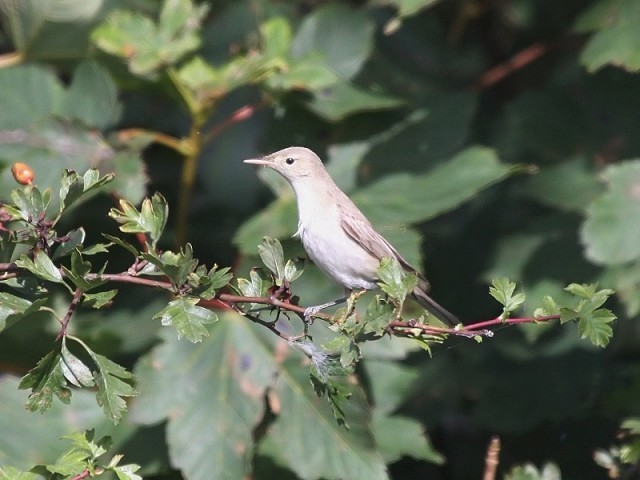
Eastern Olivaceous Warbler, Flamborough Head, East Yorkshire (Photo: John Harwood)

Collared Flycatcher, Spurn, East Yorkshire (Photo: Martin Garner)
Last up, the suitably red House Finch remained at East Prawle (Devon), though still elusive at times, to 30th at least.
The drake Ferruginous Duck was at Chew Valley Lake (Somerset) on 29th and 1st. The handful of eclipse drake Ring-necked Ducks remained, with two at Loch Leven (Perrth & Kinross) on 30th and singles in Ireland at Achill Island (Co. Mayo) again on 27th and on Carrowmore Lough (Co. Mayo) on 27th. Slightly more of a challenge was the female American Wigeon at Glaslyn Marshes (Gwynedd) on 30th–1st. The drake Surf Scoters were still at Blackdog (Aberdeenshire), with three there on 28th, and the lone drake was still at Lunan Bay (Angus & Dundee) on 30th.
Passage of 'big shears' was rather quiet, with single Cory's Shearwaters past Fanad Head (Co. Donegal), Spurn (East Yorkshire), Whitburn (Durham) and Holme (Norfolk). The only Great Shearwaters were seen past Strumble Head (Pembrokeshire) on 29th and from a boat south of Muck (Highland) on 31st. Passage of smaller shearwaters also tailed off, though 28 Sooty Shearwaters past Spurn (East Yorkshire) on 30th was notable (with 61 Arctic Skuas and 23 Great Skuas). Balearic Shearwater numbers also dropped off during the week, but the 105 past the Seawatch SW watchpoint at Gwennap Head, Porthgwarra (Cornwall) on 26th was notable.
Wilson's Storm-petrels were recorded in much smaller numbers than might be expecetd, with all reports coming from Ireland: singles off Fanad Head (Co. Donegal) on 28th and past Melmore Head (Co. Donegal) on 28th and 29th.
Two Glossy Ibis, including a colour-ringed bird, were still at Portmarnock (Co. Dublin) to 29th, with two others at Shannon Airport Lagoon (Co. Clare) on 27th–31st and an adult at Pollardstown Fen (Co. Kildare) on 30th. The long-staying bird was at Tacumshin (Wexford) until 1st, and there was also one at Cirencester (Gloucestershire) on 29th. The White Stork on the Isle of Man moved to Poyllvaaish on 26th and two adults were at Sutton Bingham Reservoir (Somerset) on 31st–1st. Apart from a single report of one of the Dungeness birds, only one Purple Heron was recorded, along the River Avon at Christchurch (Dorset) on 28th.

Glossy Ibis, Portmarnock, Dublin (Photo: Mary Rose O'Keeffe)

White Stork, Sutton Bingham Reservoir, Somerset & Bristol (Photo: K Woolley)
Two Great White Egrets remained at Shapwick Heath/Meare Heath (Somerset) all week, with other long-stayers still at Dungeness (Kent) and Lady's Island Lake (Co. Wexford). Other singles were seen in Hampshire, Cambridgeshire and Cornwall. Cattle Egrets were almost as numerous, with birds at Rainham Marsh (London) to 27th (straying to nearby Crayford Marshes on 26th), and one reappearing on Canvey Island (Essex) on 27th–29th. Singles were then at Usk (Gwent) on 30th and the one at Seaton Marshes (Devon) on 28th may have been the same as that at Axmouth on 31st.

Great White Egret, Meare Heath, Somerset & Bristol (Photo: James Packer)
Spoonbills were widespread and, away from the breeding birds in Norfolk, peak counts were of ten at Gibraltar Point (Lincolnshire) and nine on Brownsea Island (Dorset) on 31st.
On the raptor front, a wing-tagged White-tailed Eagle was on Staple Island in the Farnes (Northumberland) on 28th–31st and Black Kites were at Porthgwarra (Cornwall) on 27th–28th and over the London Wetland Centre on 31st.
One Spotted Crake continued to show on and off at Shibdon Pond (Durham) all week, with another at Cossington Meadows (Leicestershire) on the afternoon of 27th. A possible Corncrake at Greenabella Marsh (Cleveland) on 27th was seen in flight only. Another at the London Wetland Centre was seen to be taken by a Grey Heron on 30th, though slightly more obliging was one at Porth Hellick, St Mary's (Isle of Scilly) in the evening of 31st.
The adult American Golden Plover remained at Poulnasherry Bay (Co. Clare) all week, with a second moulting adult on North Ronaldsay (Orkney) on 30th–1st. Further juvenile Kentish Plovers were at Coalhouse Fort (Essex) on 28th–29th and at Eyebrook Reservoir (Leicestershire) on 28th–29th, the latter the first twitchable bird in the county since 1974. The only Dotterel reported were at Pleinmont (Guernsey) on 30th and Porthgwarra (Cornwall) on 1st.

American Golden Plover, North Ronaldsay, Orkney (Photo: Paul A Brown)

Kentish Plover, Eyebrook Reservoir, Leicestershire and Rutland (Photo: Robin Edwards)
The adult Buff-breasted Sandpiper at The Wig (Dumfries & Galloway) remained to 27th and although occasionally distant did still produce some smart photographs. There was also one at Read's Island (Lincolnshire) on 28th that may have been present for two weeks!

Buff-breasted Sandpiper, The Wig, Dumfries & Galloway (Photo: Gavin Chambers)
One of the two Pectoral Sandpipers remained at Low-Newton-by-the-Sea (Northumberland) to 26th and, in a great week for this scarce migrant, others were variously at Eyebrook Reservoir (Leicestershire), Tacumshin (Co. Wexford), Kilnsea (East Yorkshire), Cliffe Pools (Kent), Belfast Lough (Co. Antrim), Kinsale Harbour and Marsh (Co. Cork), Pagham Harbour (West Sussex), Lough Oughter (Co. Cavan), Northcotes Point (Lincolnshire), Ballycotton (Co. Cork) and Dorman's Pool (Cleveland).

Pectoral Sandpiper, Belfast Lough RSPB, Antrim (Photo: Ed.O'Hara)
The juvenile Broad-billed Sandpiper remained at Mersea Island (Essex) until 27th, though proved rather difficult to connect with. Another juvenile Semipalmated Sandpiper turned up this week, at Tyninghame Bay (Lothian) on 27th–1st, and the only White-rumped Sandpiper was a possible reported at Rye Harbour (East Sussex) on 29th.
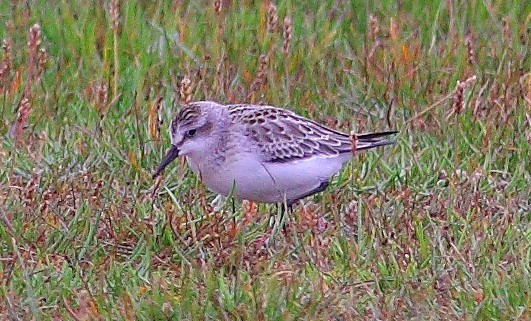
Semipalmated Sandpiper, Tyninghame Bay, Lothian (Photo: John McInnes)
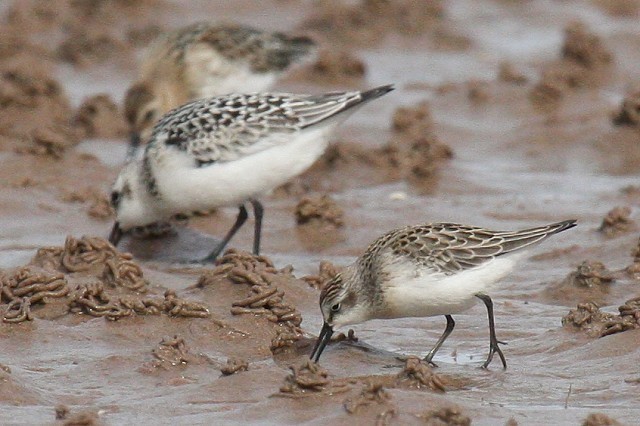
Semipalmated Sandpiper, Tyninghame Bay, Lothian (Photo: Ian Andrews)
The Long-billed Dowitcher was again at Inner Marsh Farm (Cheshire) on 26th, popping over the border to Connah's Quay (Clwyd) on 28th–30th.
On the sea, Grey Phalaropes were briefly in Chesil Cove (Dorset) on 26th and past Bridges of Ross (Co. Clare) on 28th, and one was reported inland at Pennington Flash (Manchester) on 28th. On 29th, two more passed Bridges of Ross (with a Leatherback Turtle also seen that day), and others passed Turnberry Point (Ayr), Little Orme (Conwy) and Strumble Head (Pembrokeshire) the same day. The end of the week saw a rush of juvenile Red-necked Phalaropes: new birds were at Vange Marshes (Essex) on 28th–29th, Slimbridge (Gloucestershire) on 31st–1st and Elmley Marshes (Kent) on 31st–1st.

Red-necked Phalarope, Vange Marshes, Essex (Photo: Stephen Allen)
There were plenty of skuas off all coasts, with the chance of Long-tailed Skuas keeping many on their toes. Most birds reported were juveniles and the peak counts were of eight birds past Kessingland (Suffolk) on 26th and seven past Kilcummin Head (Co. Mayo) on 29th.
Gull interest was limited, with the adult Glaucous Gull still at Kilrush until 26th and a first-summer at Youghal (Co. Cork) on 28th. From the west, the first-summer American Herring Gull was reported again at Blennerville (Co. Kerry) to 31st and the trio of Ring-billed Gulls remained: at Rossi's Ice Cream Parlour in Westcliffe-on-Sea (Essex) to 29th, the first-summer at Stanpit Marsh (Dorset) until 1st and the ringed adult in the roost at Alston Reservoir (Lancashire) again on 27th. A Bonaparte's Gull was also on the beach at Whitburn (Durham) on 28th, before being seen off Tynemouth (Northumberland) on 29th and then back at Whitburn Steel on 31st.

Ring-billed Gull, Alston Reservoirs, Lancashire (Photo: Gavin Thomas)
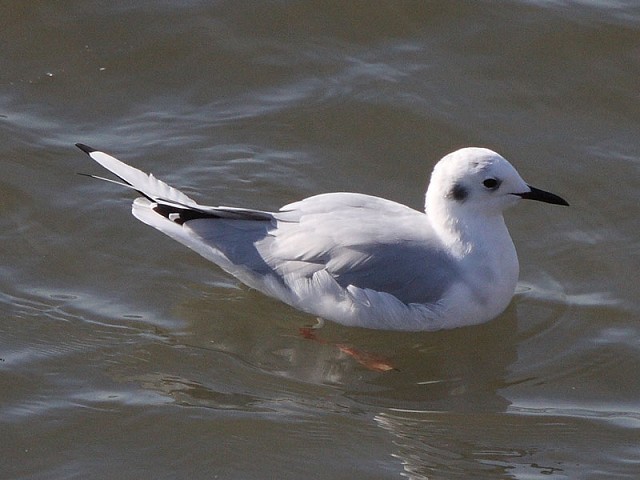
Bonaparte's Gull, Whitburn Steel, Durham (Photo: Mark Newsome)
It was perhaps the extra push of westerlies in the week that bunked up the numbers of Sabine's Gulls around the coast. In comparison to previous weeks, there were many more juveniles reported this week, with three past Cooanmore Point (Co. Sligo) on 29th. Two adults and a juvenile passed Southend-on-Sea (Essex) on 27th, with twos also past Bridges of Ross (Co. Clare), Waternish Point, Skye (Highland) and Canvey Island (Essex), and singles past Spurn (East Yorkshire) and Turnberry Point (Ayr) (a juvenile on 28th and an adult the next day).
A juvenile Whiskered Tern at Venus Pool (Somerset) on 29th was identified retrospectively from photographs, and one at Rutland Water (Leicestershire) on 31st–1st was only the fourth county record. There were also good numbers of passage Black Terns, with birds in all parts of the country, the most impressive count being 26 at Rye Harbour (East Sussex) on 26th.
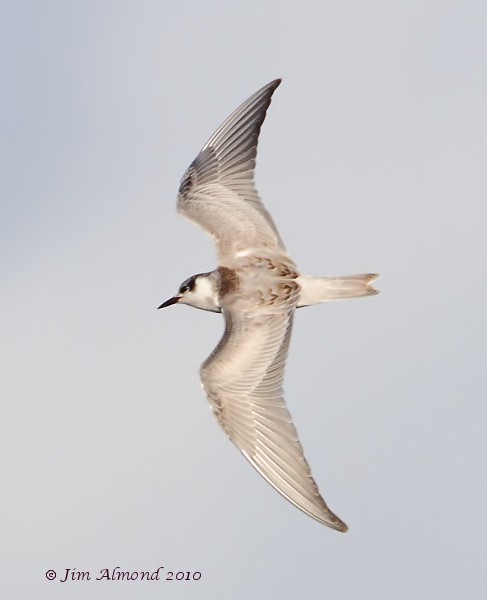
Whiskered Tern, Venus Pool NR, Shropshire (Photo: Jim Almond)
As might be expected in mid-autumn, Wrynecks were widespread, reported from Norfolk, Hampshire, Suffolk, Kent, Dorset, Gloucestershire, East Yorkshire, Somerset, Devon, Dorset, West Sussex, Cornwall, Co. Cork and Guernsey. Inland birds were at Clee Hill (Shropshire), Pitsford Reservoir (Northamptonshire) and in a private garden at Horton-cum-Studley (Oxfordshire).

Wryneck, Benacre, Suffolk (Photo: Ian Clarke)
There were also a few Hoopoes, with birds at Climping (West Sussex) on 28th–30th and in a private garden at Merston (West Sussex) on 27th. In Cornwall one flew past Land's End on 30th and another was on the Lizard on 1st.
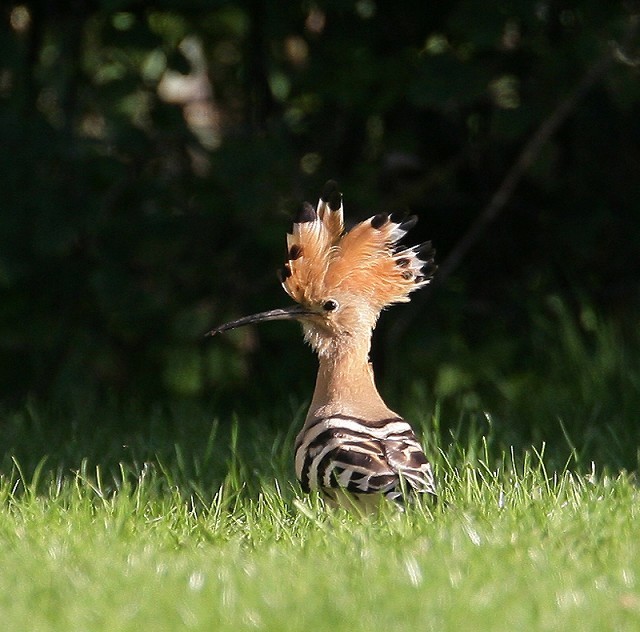
Hoopoe, Climping, West Sussex (Photo: Dorian Mason)
The first Short-toed Lark of the autumn was at the Cley end of Blakeney Point (Norfolk) on 28th–31st and the second Richard's Pipit of the autumn was at Margate (Kent) briefly on 31st before flying off west.

Short-toed Lark, Blakeney Point, Norfolk (Photo: Penny Clarke)
Derbyshire's first Citrine Wagtail, a juvenile, was found at Ogston Reservoir on 28th but not positively identified until 30th. Fortunately it stayed long enough for many county listers to see, though wasn't present the next day. There was then another, on St. Agnes (Scilly) on 1st. Other scarce passerine interest was provided by a Red-rumped Swallow at Dunkeld (Perth & Kinross) on 28th and a Woodchat Shrike on the airfield at St Mary's (Scilly) on 29th.
Only slightly more widespread were Red-backed Shrikes, with birds in Northumberland, Norfolk, Bedfordshire, Kent, Somerset and Cornwall.
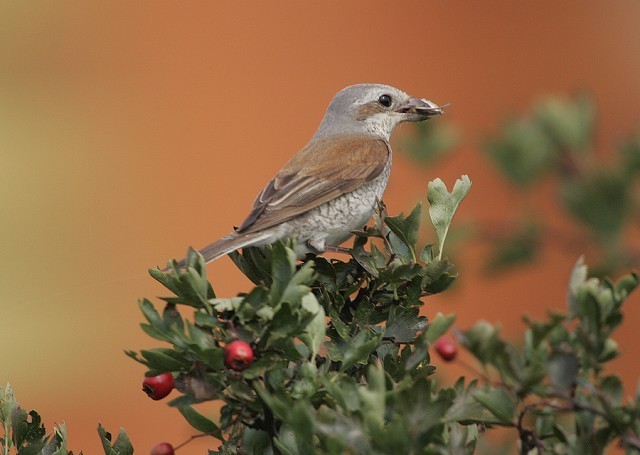
Red-backed Shrike, Biggleswade, Bedfordshire (Photo: Dave Hutton)
Another Aquatic Warbler was ringed, this time at Uskmouth (Gwent) on 30th, with one reported as seen briefly at Marazion Marsh (Cornwall) on 30th and one at Slimbridge (Gloucestershire) on 1st. Marsh Warblers have been very scarce so far this autumn, with just one record this week, at Rimac (Lincolnshire) on 28th. Of more interest for many was a Booted Warbler on Blakeney Point (Norfolk) on late evening of 27th, causing some a walk back along the shingle to Cley in darkness.

Booted Warbler, Blakeney Point, Norfolk (Photo: Penny Clarke)
Spurn's early-autumn purple patch continued with a possible Booted Warbler on 1st, although this couldn't be relocated. Another possible was a Sardinian Warbler on Beachy Head (East Sussex) on 31st.
The distribution of Barred Warblers had a more easterly bias this week, with all bar two on the coast north of Suffolk. Spurn (East Yorkshire) had the lion's share, with five recorded on 30th, the observatory also holding up to 11 Pied Flycatchers, 11 Redstarts and 24 Whinchats. The only Barred Warblers in the west were on Tory Island (Co. Donegal) on 31st–1st and North Uist (Outer Hebrides) on 1st.

Barred Warbler, Spurn, East Yorkshire (Photo: Martin Garner)
The east also saw several more Icterine Warblers: at Walsey Hills (Norfolk) on 27th–1st, one ringed at Holme (Norfolk) on 27th, at Saltfleetby (Lincolnshire) on 27th–28th, at Flamborough Head (East Yorkshire) on 28th, two at Dungeness (Kent) on 28th, one on Skomer (Pembrokeshire) on 31st, and new birds on 1st on St Mary's (Scilly), at Mizen Head (Co. Cork) and at Cunningsburgh (Shetland).

Icterine Warbler, Dungeness, Kent (Photo: Martin Casemore)
Apart from an elusive bird at Sandwich Bay (Kent) on 28th, Melodious Warblers were expectedly in western areas, with the Isles of Scilly hosting a probable on St Agnes on 31st, and confirmed records on Bryher on 31st and St Mary's on 1st; one was also on Bardsey Island (Gwynedd) on 1st.
Two Greenish Warblers were reported, with the BirdTrack Organiser just managing to claim the honours of one at East Hills (Norfolk) on 28th and 31st before the Punkbirder — well done Nick; unlucky Dave! The other was on St Mary's Island (Northumberland) on 31st–1st. Another Arctic Warbler was ringed on Fair Isle (Shetland) on 31st.
Common migrants seemed to be in small numbers, with no big movements of species such as Pied Flycatcher, Redstart or Wood Warbler, and there was also only one Bluethroat reported, on Blakeney Point (Norfolk) on 26th–28th.
Typically, the northern isles saw most of the week's Common Rosefinches, with one on Yell (Shetland) on 26th, three on Fair Isle (Shetland) on 29th and six there on 31st, though singles were also on Brownsman, Farne Islands (Northumberland) on 28th, on St Agnes (Scilly) on 30th and at Spurn (East Yorkshire) on 1st.
A photogenic Ortolan Bunting was at Landguard (Suffolk) on 28th, with others reported from Portland Bill (Dorset) on 28th, over Lizard Point (Cornwall) on 30th, on Bryher (Scilly) on 30th–31st and at Pleinmont (Guernsey) on 31st. One was also rather uncharacteristically in woodland at Rainham Marsh (London) on 31st, almost an exact copy of one there just one day earlier two years ago.
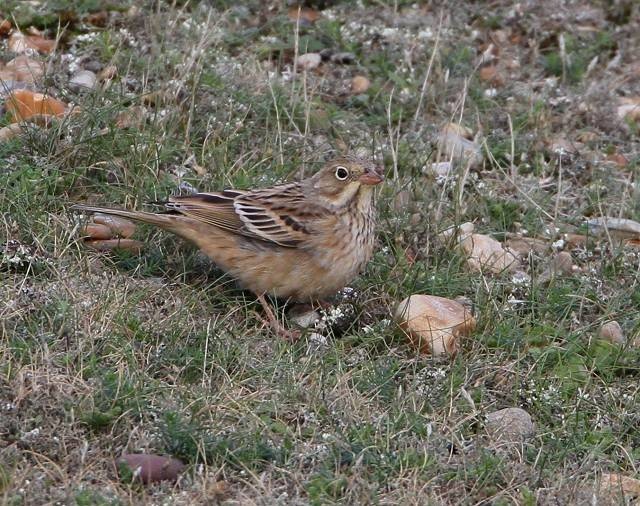
Ortolan Bunting, Landguard NR, Suffolk (Photo: Ian Clarke)
There was an exceptional influx of Lapland Buntings at the end of the week, with birds well spread along the north and west coasts. Peak counts included a record island count of 142 on Fair Isle (Shetland) on 31st, a record island count of 92 on North Ronaldsay (Orkney) on 31st and 74 at Butt of Lewis (Outer Hebrides) on 1st. These birds are presumably from the Greenland population, and Iceland has also had a new record count, of 120 birds. Several birds were also scattered along the east coast, so it will be well worth checking any remaining stubble fields and Skylark flocks near you this coming week.
Lastly, the most bizarre record was of a Zebra Finch feeding a newly fledged chick at Wendover Woods (Buckinghamshire) on 31st.
Photo of the Week
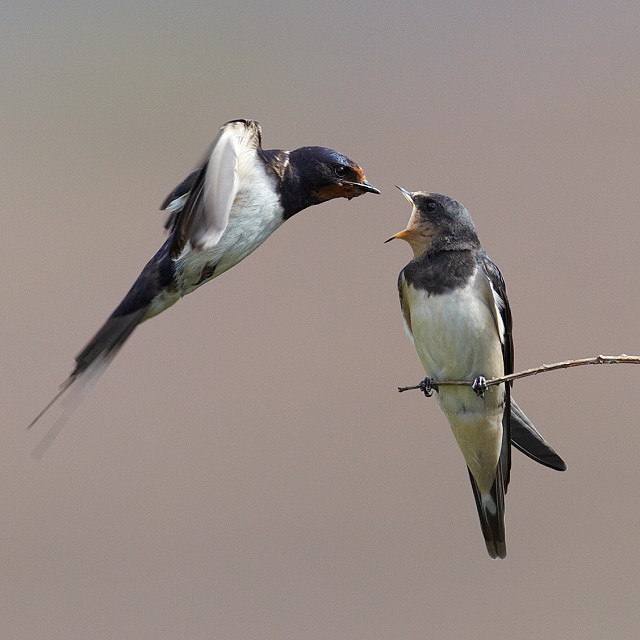
Swallow, Hartland Moor, Dorset (Photo:
Simon Johnson)
A characteristic of bird images that is not often talked about is their 'seasonality': some images could have been taken at any time of the year, whereas others clearly relate to a specific period in the calendar. Highly seasonal images have the added advantage of evoking the experience of the relevant season. At this time of year, a shot of Fieldfares in the snow could bring an unwelcome chill, whereas a typical summer image could help keep us in denial about the dark, cold days to come. Combining the strong summertime associations of Swallows and the feeding of young birds, Simon Johnson has captured a real 'image of the moment'. Simon's simple composition of two birds against a plain background, with only a twig as an additional element, makes the image leap off the screen, whilst the proximity and eye contact of the subjects convey the strength of their bond.
Other notable photos
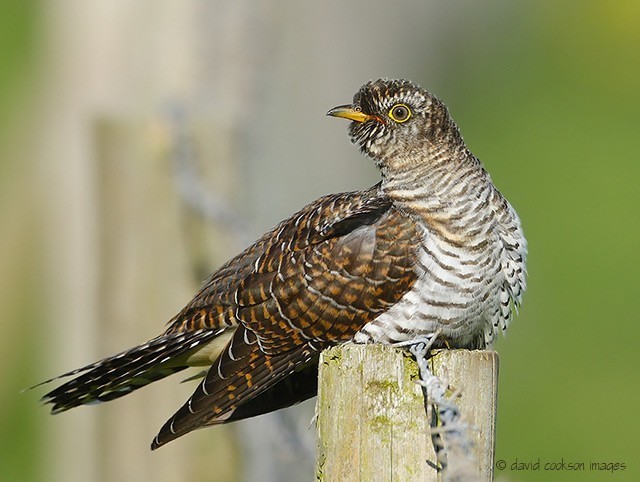
Cuckoo, undisclosed site, Lancashire (Photo:
David Cookson)
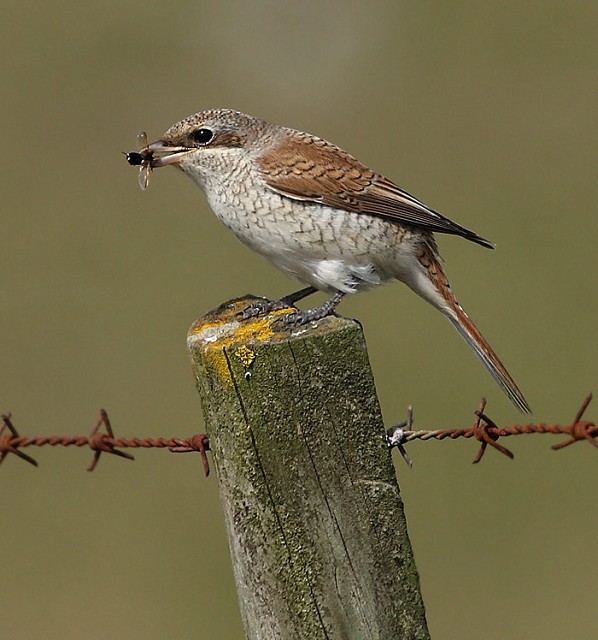
Red-backed Shrike, Stolford, Somerset & Bristol (Photo:
James Packer)

Sand Martin, Bawdsey, Suffolk (Photo:
Jon Evans)

Indian Robin, India (Photo:
Kit Day)

Ruff, Oare Marshes NR, Kent (Photo:
Ian Curran)

Dotterel, Pleinmont, Guernsey (Photo:
Steve Levrier)

Short-eared Owl, Old Hall Marshes RSPB, Essex (Photo:
Pixellence)

White-tailed Eagle, Loch na Keal, Mull, Argyll (Photo:
Steve Hiscock)

Common Kestrel, Otmoor RSPB, Oxfordshire (Photo:
Tom Hines)
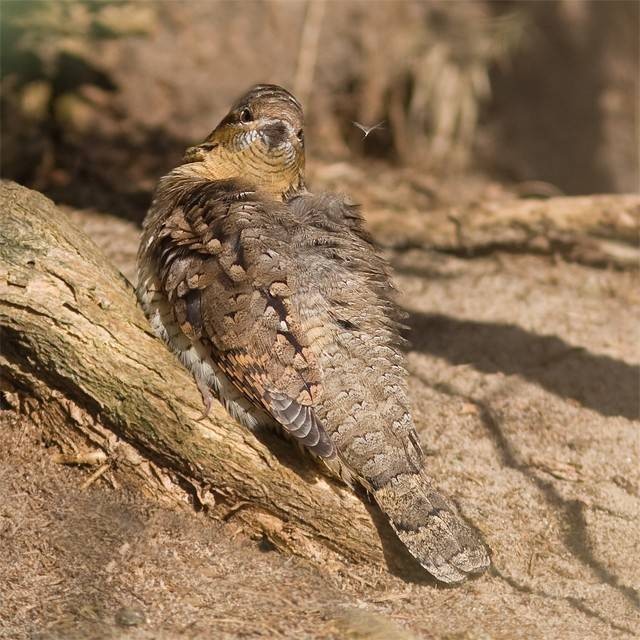
Wryneck, Minsmere RSPB, Suffolk (Photo:
David H Hatton)

Spotted Redshank, Sandwich Bay, Kent (Photo:
Steve Ashton)

Meadow Pipit, Strathconon, Highland (Photo:
Ron McCombe)
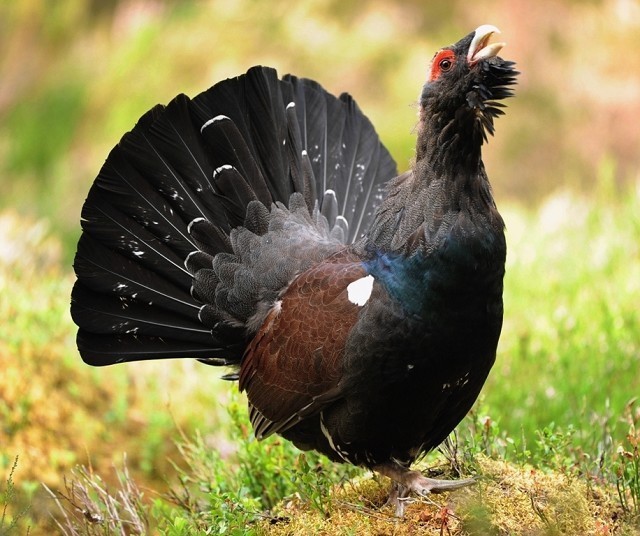
Capercaillie, undisclosed site, Highland (Photo:
Rob Sewell)

Curlew Sandpiper, Instow, Devon (Photo:
Roy Churchill)

Lapland Bunting, Fort Island, Isle of Man (Photo:
Pete Hadfield)

